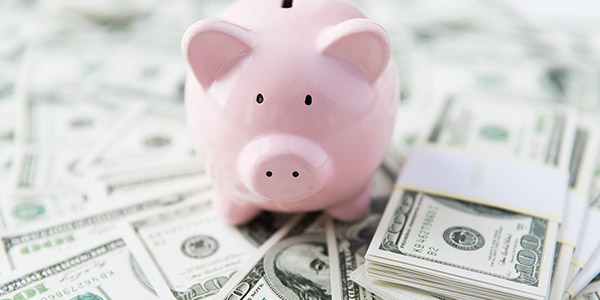Homebuyers
How to Save for Your First Home
February 25, 2016
First-time home buyers make up a significant portion of the homebuying market. In 2015, 32 percent of people purchasing a home were doing so for the first time, according to the National Association of Realtors.
There are many aspects of the home buying process that this section of the market doesn't know or isn't familiar with. One of the biggest shocks they encounter is how much a down payment is. This fee is typically a specific percentage of the home's value. This amount is determined by the buyer's chosen lender, who then bases it on the borrower's credit, income, and other factors, according to SFGate. The most common amount is 20 percent of the price of the home. In 2015, this means the average down payment was around $70,000, based on the U.S. Census Bureau's count of the average home cost in the first 11 months of 2015. However, different lenders may require even less of a down payment, depending on the loan program and the borrower's financial history.
How to Save for a Down Payment
Regardless of what percentage the down payment needs to be, this is a large sum of money and it's no saving for it is no small task. However, with some discipline and time, first-time home buyers can accumulate the amount they need to purchase their very first home.
The first thing any saver will need is a plan. To determine how much you can save each month, review your finances. Determine how much money you make monthly, then subtract necessary expenses like rent, groceries, utilities, loan payments, car payments, and any other expenses you pay regularly. The amount that is left is the amount you'll be able to save. To increase this number, find areas where you can pay less money. This might mean cutting your grocery expenses by leaving some of your favorite treats out of the shopping cart or changing your cell phone plan to a cheaper one.
Once you have a plan to begin saving, Daily Finance suggests creating a savings account specifically for your house fund. The money in this account will only go toward your down payment, closing costs, and, afterward, your mortgage payments and necessary home repairs.
As you begin saving, it's important to also set money aside for emergencies and unforeseen circumstances. Suddenly finding yourself in a financial pinch could steer you toward dipping into the savings you set aside for a down payment. However, doing this will set you and your dreams of home ownership back. Instead, consider creating a separate savings account for an emergency fund, New Home Source advised. This way, there is a clear distinction between money that is off-limits and money that is available in unfortunate situations. Having about six months of salary set aside is a good goal. That way, if you experience a layoff, you have some money to get you by while you find new employment, but you won't be forced to spend your down payment on living expenses.
Saving Isn't the Only Hurdle
According to Kiplinger, there is more to preparing for a down payment than the act of saving itself. It's also a good idea to know where you might stand in the eyes of a creditor. Since your down payment will likely be tied to your credit score, take a look at your credit report. You have access to a free report each year from each of the three credit reporting agencies: Experian, TransUnion, and Equifax. It might also be a good idea to check out your actual credit score, though it isn't free like the credit reports are.
There are multiple benefits to knowing what your score is and what your report says. First, it shows you what lenders will see when you apply for a mortgage. Second, it gives you a chance to correct any errors. A mistake on your credit report can bring your score down and hurt your chances of getting a good loan. Finally, it gives you a good idea of how you need to improve. If you see that you have a low credit score at the beginning of your savings journey, begin to make changes to improve it. Start paying bills on time and get rid of any outstanding debt. In a few years, you will start to see improvement.
Another thing you will need to do while saving for your down payment is determine how much you can afford to pay for a home. While the average home price hovered around $350,000 in 2015, the median home price was lower than this, according to the U.S. Census Bureau. This means there are plenty of homes that are below $300,000, as well as some that are much higher.
Where you buy a home will play a big factor in how much your home costs. Figure out where you want to buy and look at the prices of homes in that area. Decide if this is a cost you can afford. If it is, you have a savings goal. Having a set amount in mind is important when saving for a down payment. Without this, you may begin looking for your home before you have enough saved up.
Saving up for a down payment is hard work. It will likely take a few years of disciplined financing to accrue the amount you need to secure your first home. However, by creating a plan, setting aside money little by little, and knowing how much you will need, your savings goal is within sight. Soon, you'll be able to begin house hunting.





 Smart Moves Start Here.
Smart Moves Start Here.